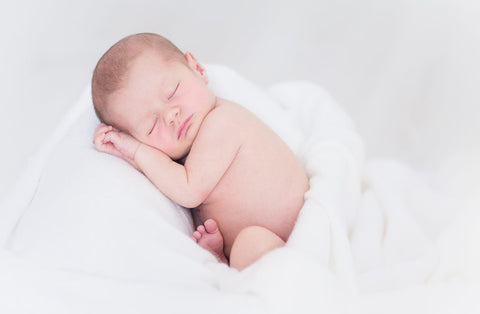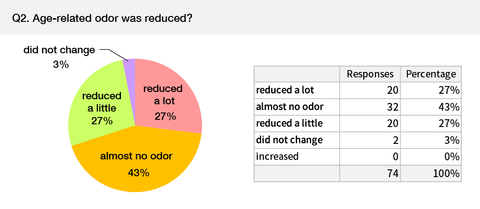Age-related odor is related to oxidative stress?
March 15, 2021
Age-related odor is related to oxidative stress?
Age-related odor is something that inevitably appears as we age. You may not notice it so much on your own.
Why is it that babies right after birth smell good, but as they age, they smell old?

In April 2001, the Shiseido Research Center announced that nonenal is the causative agent of age-related odor.
Nonenal is a clear, colorless substance that smells like oil. The smell of nonenal is the smell of aging.
Especially in middle-aged and older people, the concentration of 2-nonenal is said to be the highest.
This 2-nonenal is a type of unsaturated aldehyde. Its chemical formula is C9H16O.
So how does this nonenal occur?
The ω-7 unsaturated fatty acids like palmitoleic acid and vaxenic acid that appear on the surface of the skin are oxidized and oxidative stress is the cause of age-related odor. In other words, it can be said that oxidative stress causes age-related odor to appear.
The amount of ω-7 unsaturated fatty acids increases with age, and among the ω-7 unsaturated fatty acids is a substance called palmitoleic acid (9-hexadecenoic acid).
Palmitoleic acid (9-hexadecenoic acid) is odorless by itself, but when it comes to the surface of the skin and is oxidized and broken down, it breaks down into substances that produce age-related odors such as nonenal.
The relationship between aging odor and oxidative stress
Regarding the relationship between aging odor and oxidative stress, there is data on what happened to aging odor as a result of taking Twendee X, a supplement that lowers oxidative stress.
To check for age-related odor, press a tissue hard against the back of the ears and neck, scalp, T-zone of the face, armpits, chest, etc., where age-related odor tends to occur, wipe it off, and have a third person smell it. If it smells like rotten oil, candles, old wardrobe, etc., it is judged as aging odor.
First, let’s look at the situation of age-related odor.

32% who have a lot of age-related odor, 57% who have a little.
Next, here are the results of taking Twendee X.

Those who have lost much of their age-related odor: 27%. Those who have almost disappeared: 43%.
Those who have lost a little are 27%, and those who have not changed are 3%.
These results show that lowering oxidative stress can have a certain effect on age-related odor.
If you are suffering from age-related odor, I recommend that you try to live a life that lowers oxidative stress.

